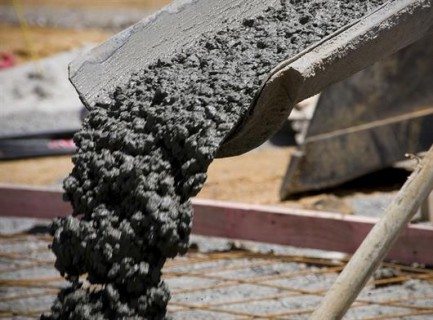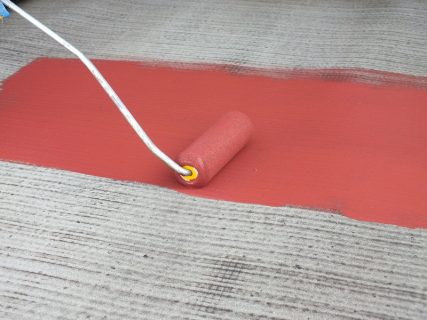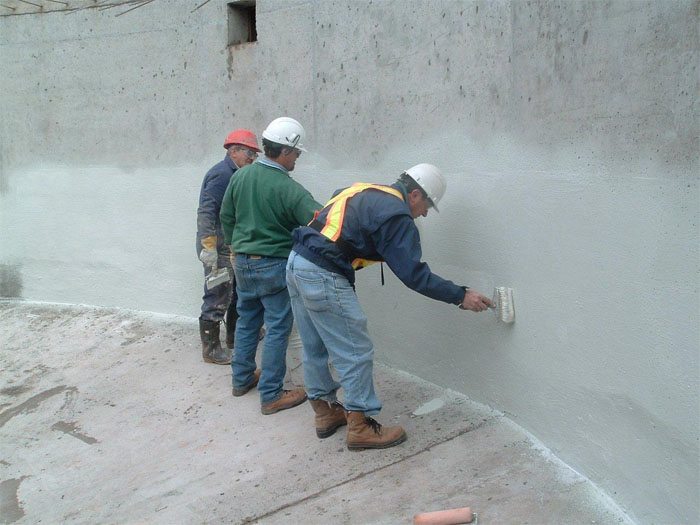Concrete is known to be strong, durable and perfect for both utilitarian and decorative purposes worldwide. However, concrete is also porous, permeable and prone to cracking, therefore there is needs for concrete waterproofing. Water while essential in concrete production, placement, and curing is at the same time corrosive to the material, because once it fulfills its role in the production and other processes, it becomes an enemy to concrete. Although rated by its function and the nature of its exposure, concrete can as well perform well in wet environments.
 As Africa emerges as a key global player in the construction industry with its numerous infrastructural development opportunities, there is need for general awareness on waterproofing products.Therefore, modern technology and revamping of the construction industry with regards to waterproof concrete will be key to enhancing the infrastructural development is sustainable.
As Africa emerges as a key global player in the construction industry with its numerous infrastructural development opportunities, there is need for general awareness on waterproofing products.Therefore, modern technology and revamping of the construction industry with regards to waterproof concrete will be key to enhancing the infrastructural development is sustainable.
Also Read: Utilizing FRPs for concrete strengthening
Benefits
Exposure of concrete to water slowly reduces the permanence/durability of concrete structures, thus raising the cost of maintenance of bridges, buildings and other facilities. Water’s toxic effects on concrete structures can be avoided through the use of waterproof concrete technology, which efficiently improves the durability and lifespan of concrete structures, hence reducing long-term maintenance costs.
Concrete waterproofing technologies such as PRAs(Permeability-Reducing) can save projects a lot. For example when power generation from hydrodams sometimes may need to be stopped to carry membrane waterproofing and expoxy-coated reinforcement, this comes at great cost. A good example is the rehabilitation of Kariba hydrodam in Zimbabwe and Zambia, whose walls had been deteriorating as a result of corrosion and blockage. According to studies done on the facility, the two governments were set to receive US $294m from World Bank, European Union (EU), the Government of Sweden and the African Development Bank for the repair; and the project was to be undertaken over six years to achieve minimal disruptions.
Waterproof concrete reduces permeability, and the admixture acts as a mild retarder, so it helps to control the heat of hydration and consequently reduces shrinkage cracking. It does not drastically change the properties of fresh concrete, but it can somewhat improve workability.
According to John Gichohi, the Operations Director at Kenya Water Proofing Company Limited, correctly done; waterproofing especially using products with crystalline compounds, lasts the lifetime of a building.
“Basement waterproofing is quite essential. When doing waterproofing of a building, we start from the base upwards. This is to prevent the underground water from penetrating into the building and making it inhabitable. For very deep buildings, we do double waterproofing: at the bottom and at the top of the concrete slab,” he explains. “Also, depending on the design of the building, waterproofing the walls is necessary to protect the reinforcement steel from rusting, which ultimately weakens the structure. It is advisable to do waterproofing of walls from the outside. However, in the big buildings, they do beacon to beacon design of construction which makes it difficult to waterproof from the outside and so we do it from the inside,” he adds.
Admixtures
Waterproofing admixtures reduce permeability of concrete, thus are known as permeability-reducing admixtures. Additionally, these are classified in two: those used in nonhydrostatic conditions (PRAN) and those used under hydrostatic conditions (PRAH). According to American Concrete Institute, PRAHs are better than the PRANs.
The best choice for waterproofing under hydrostatic pressure would be (water attracting) hydrophilic crystalline admixtures since they offer greatest resistance to water infiltration and best seal pores, cracks and offer long-term benefits. The reaction between the active ingredients contained in these admixtures and the water and cements particles, produce calcium silicate crystals. These crystals bond with cement paste and effectively seal the pores and microcracks, and therefore preventing infiltration of water through the structure. Cracks will be sealed over the lifetime of the structure since these reaction continues. Concrete admixtures produced from water-repellent chemicals (hydrophobic) materials such as soaps, vegetable oils, petroleum must be avoided since they do not uniformly seal all pores on concrete – concrete has larger voids – although they resist water infiltration by forming a water-repellent layer.
Use of waterproof concrete admixtures depends on what conditions the structure will be exposed to; permeability is not a big issue with interior columns, beams, and floor slabs in high-rise construction, but use of PRA is important when a structure is to be exposed to water under hydrostatic pressure, wicking, salt water, or moisture or salt itself. They can be trusted in keeping off leaking of water, water migration, carbonation, freezing/thaw damage and efflorescence.
Dams, bridges, pools, water tanks, tunnels and subways that will experience more extreme and continuous exposure are better handled by use of PRAHs since they are effective in resisting permeability of water under pressure. PRANs are avoided when water to be resisted is under pressure but mainly used to help structures or products repel rain and dampness as may be needful in pavers, blocks, brick, precast panels and architectural concrete.

PRAs waterproofing admixtures can be added in ready-mix concrete at the mixing plant as recommended by an architect or engineer. They can also be added to any concrete mix. Experts can also recommend use of other types of waterproofing products on a building or structure that is complete.
Nevertheless, Nicole De Freitas of Pudlo South Africa insists that waterproofing is all based on Concrete not cracking and this can only be achieved with ‘Good Cement Practice’. “Most Waterproofers will fail if the concrete cracks whether a system or admix is specified,” she adds.
Use of Waterproofing Membranes
Waterproofing membranes are available in sheet form or liquid form. Liquid membranes are sprayed, rolled or trowelled onto the concrete surface and cure to form a rubbery waterproof coating. Sheet membranes come in sheet form and are stuck to the concrete surface to provide a waterproof barrier preventing water intrusion into the structural elements of a building or its finished spaces. The material consist of waterproof plastic, rubber, or coated-fabric materials that prevent the entrance of water into foundations, roofs, walls, basements, buildings, and structures when properly installed.
According to Don Mangione of Innovative Waterproofing Solutions from the US,as contractors face labor shortages and begin to let go of old and inefficient materials and processes in the waterproofing and roof restoration arena; cold spray applied liquid membranes will emerge as the most effective, environmentally friendly and cost saving solution to most building envelope needs.
Cementitious Waterproofing
The material is a cement-based compound with additives that is mixed with other bonding agents to create slurry that can be applied to concrete surfaces for waterproofing. Materials such as fly ash, slag and silica can be mixed with concrete as fine particles to fill gaps and render it less permeable.
Cementitious waterproofing membranes have been used successfully to shield a wide range of buildings and structural components that are exposed to either periodic or long-term wetting, low hydrostatic pressure or, in combination with appropriate engineering, even high hydrostatic pressure.
The major applications are the sealing and waterproofing of terraces, basement walls, water tanks, swimming pools, walls and floors in wet-rooms such as toilets and bathrooms. The slurry membranes are easy to use and non-toxic. The membranes can as well be applied to wet or damp mineral surfaces since their physical properties are less temperature-dependent than bitumen based materials.
Crystalline Waterproofing
Exposure of concrete to water causes it to become a hard solid mass. The resulting by-products of the reaction reside at the capillary tracts of concrete. Crystalline waterproofing is applied in the form of coating or as a dry-shake application on the structure and acts when the chemical reacts with moisture and the by-products of reaction between concrete and water. This results in an insoluble product – in addition, this reaction occurs wherever water goes, whether in structure cracks or inside.
It helps protect structures against effects of aggressive chemicals. It also improves the water proofness and durability of concrete by filling and plugging pores, capillaries, micro-cracks among other voids which are non-soluble and highly resistant crystalline formation.
Choosing the right waterproofing material
When it comes to choosing the right waterproofing material for a particular project, quite a number of factors are involved. According to Anthony Ajulo of Advanced Concrete Technologies (Act Nigeria), among these factors are the history of the area where construction is to be done, the water level, and environmental factors such as closeness. “Specifying the wrong waterproofing admixtures or coatings can lead to failure of a project. According to ACI 212, crystalline admixtures are the recommended admixtures for building in areas subject to hydrostatic pressure,” he adds.
Theodore Mellos, Regional Export Sales Manager ALCHIMICA Building Chemicals, notes that water resistance, UV resistance, acid rain resistance and the ability to resist damage on thermal cycling are the main factors that determine the durability of waterproofing systems. That means that there are no “one-fits-all-solutions”, and different waterproofing applications require the use of different systems.
He further adds that HYPERDESMO®, the flagship product of ALCHIMICA Building Chemicals being a liquid applied waterproofing system, allows the optimization of consumption, film thickness and way of application, to what is best suited for each project. Furthermore and as opposed to prefabricated membranes, the use of liquid applied systems ensures uniform adhesion to the substrate without incorporating seams, a characteristic that minimizes potential risks for cracks and leakages in the future.
Maria Hyttinen Export Director at Nordic Waterproofing Finland comments “The important thing for the consumers to understand is that waterproofing is an integral part of a building’s structural performance. We have observed that in low income, price-oriented markets which consumers tend to cut costs in waterproofing applications and thus, sacrificing the safety and stability of a structure in the long term. When it comes to waterproofing, cheap solutions usually end up being much more expensive,”
“Nordic Waterproofing Group is a Northern European market leader within the waterproofing market.The company has waterproofing products made of SBS-modified bitumen, which makes them flexible and long-lasting and when properly installed, our waterproofing products are supposed to last for decades (ca. 30-40 years) without repair,” said Maria Hyttinen.
Mr. Francesco Marcelli of Diasen further advises that, the contractor needs to choose waterproofing materials that are fast and easy to apply. “You should need just a roll or a brush, no need of fire and big bituminous membranes just some buckets; the materials should be ready to be applied, no need of special mixing. Very low consumption: this means that generally with one bucket of 20 kg it is possible to waterproof up to 10 m2. The materials should be water-based, so they are not dangerous for transport and are safe for the men who apply them,” he adds.
 Nevertheless, Colm Halley the General Manager at Fosroc Kenya comments that, the wrong product, applied badly will end up with you incurring huge costs in water damage and leakages. It is therefore key that you speak to the manufacturer and ensure the correct specification is given and that all steps are taken to ensuring it is applied correctly.
Nevertheless, Colm Halley the General Manager at Fosroc Kenya comments that, the wrong product, applied badly will end up with you incurring huge costs in water damage and leakages. It is therefore key that you speak to the manufacturer and ensure the correct specification is given and that all steps are taken to ensuring it is applied correctly.
“As projects get more and more complex and developers/home owners expectations increase, older technologies like APP Membranes will start to die out as it has in the rest of the world. We see a move toward single component spray applied waterproofing products and a move toward higher technology roll-on membranes,” he affirms.


It’s great to learn that crystalline waterproofing can help make a concrete basement more durable. My wife and I are wanting to build our dream home and we were wondering how we can make the basement waterproof. I’ll be sure to tell her that we should try waterproofing our basement with crystalline before it’s finished.
It’s interesting to know from your article that exposure of concrete to water slowly reduces the durability of concrete structures, thus it raises the cost of maintenance of bridges, buildings, and other infrastructures. With that, as you’ve noted, concrete waterproofing solutions can come in handy. I’ve been thinking of hiring contractors that can do basement waterproofing, good thing I’ve read your insightful piece on its effectivity.
Great article , thanks for sharing. According to me house waterproofing should be taken up as a measure while building a new home as well as can be done while repairing.
That is good to know you can add waterproofing stuff to ready mix concrete. I will remember that next time I find myself working with it. I am building a small addition to my home and will be needing to use some concrete for a small foundation.
http://www.readymixconcretehillsboro.com/Block_Rock_Products_Forest_Grove_OR.html
It really make sense that there are so many different ways to waterproof the basement. Something that really is interesting as well is that there are paints that are available that ensure that the concrete stays sealed. Hopefully this will be something that ends up helping those who are in need of some sort of waterproofing in their basement. Thank you for sharing this information.
http://www.sohanandsons.com/basement-water-proofing
Thank you for the invaluable information on concrete waterproofing. Could you please provide list of suppliers in East and West Africa.
Regards,
Gebremeskel Teare, Arch.
Thank you Matt for the feedback. Yes, Concrete waterproofing methods are many, There is even another post here http://constructionreviewonline.com/knowhow/2015/04/crystalline-concrete-waterproofing/ that discusses Crystalline type in details and advantages of it such as giving structures more durability and reducing need for repairs. Construction Review is dedicated on providing valuable info.
Your post gives useful tips on concrete waterproofing. Most of the people are not aware of the fact that there are different types of waterproofing methods available and your post gives useful tips on it. Thanks for sharing useful tips on selecting a right waterproofing method.